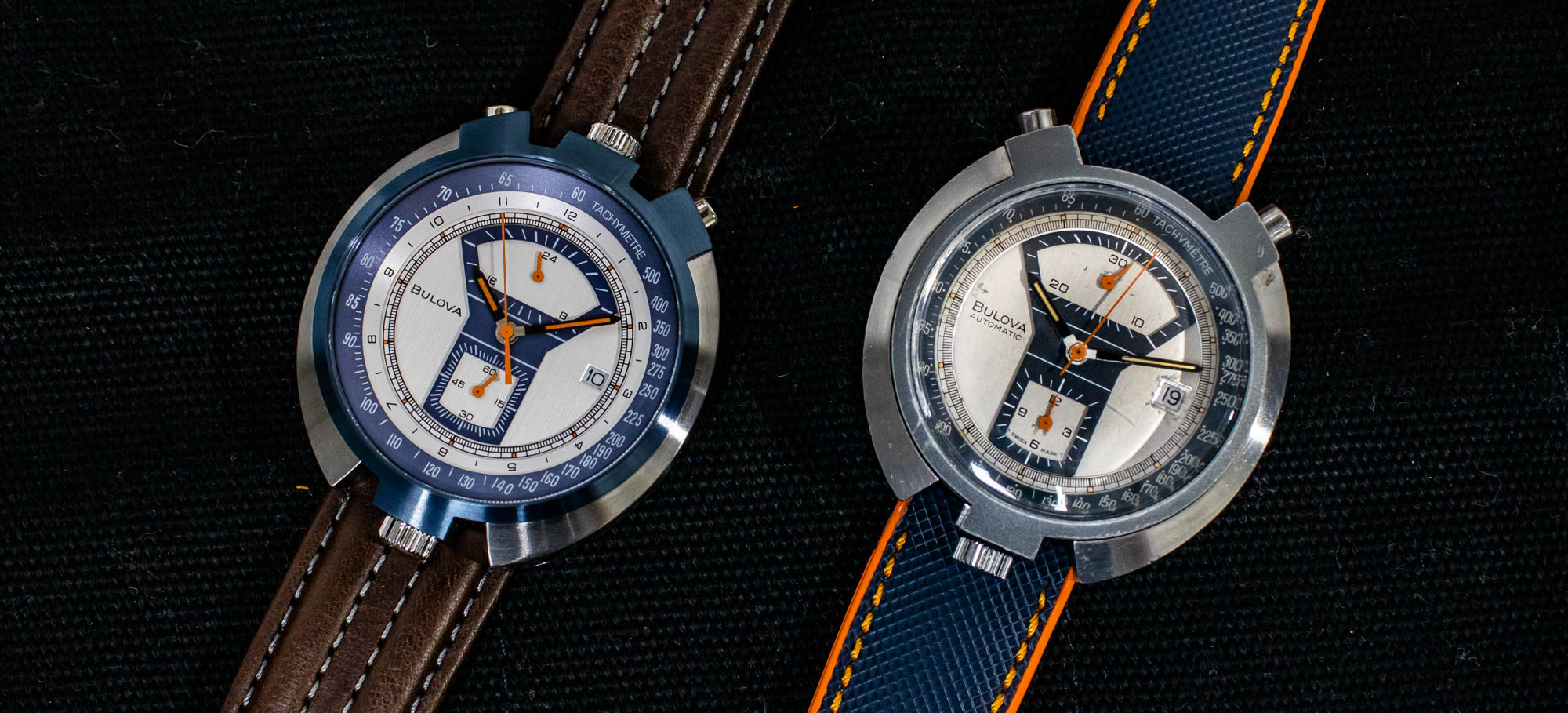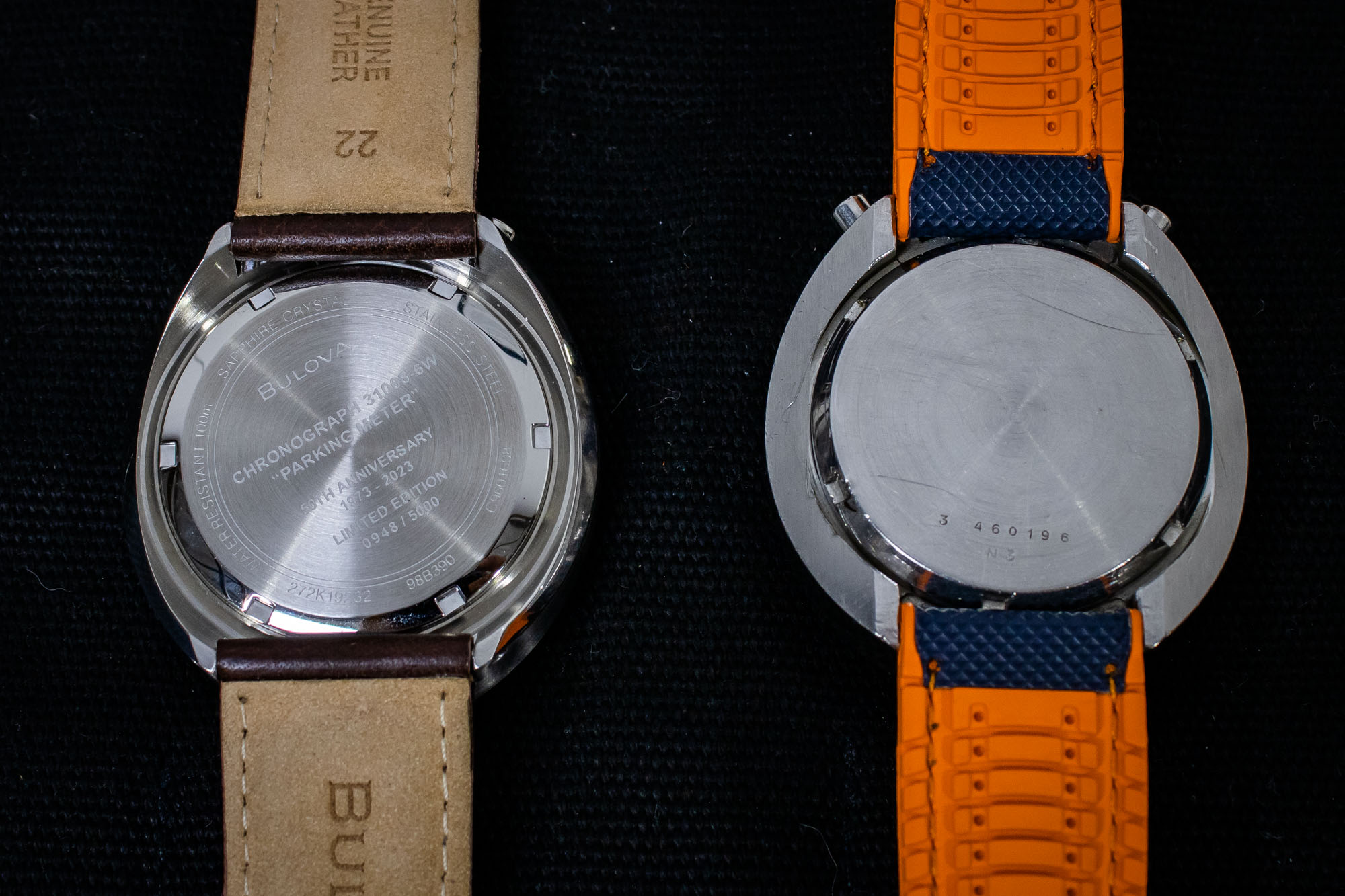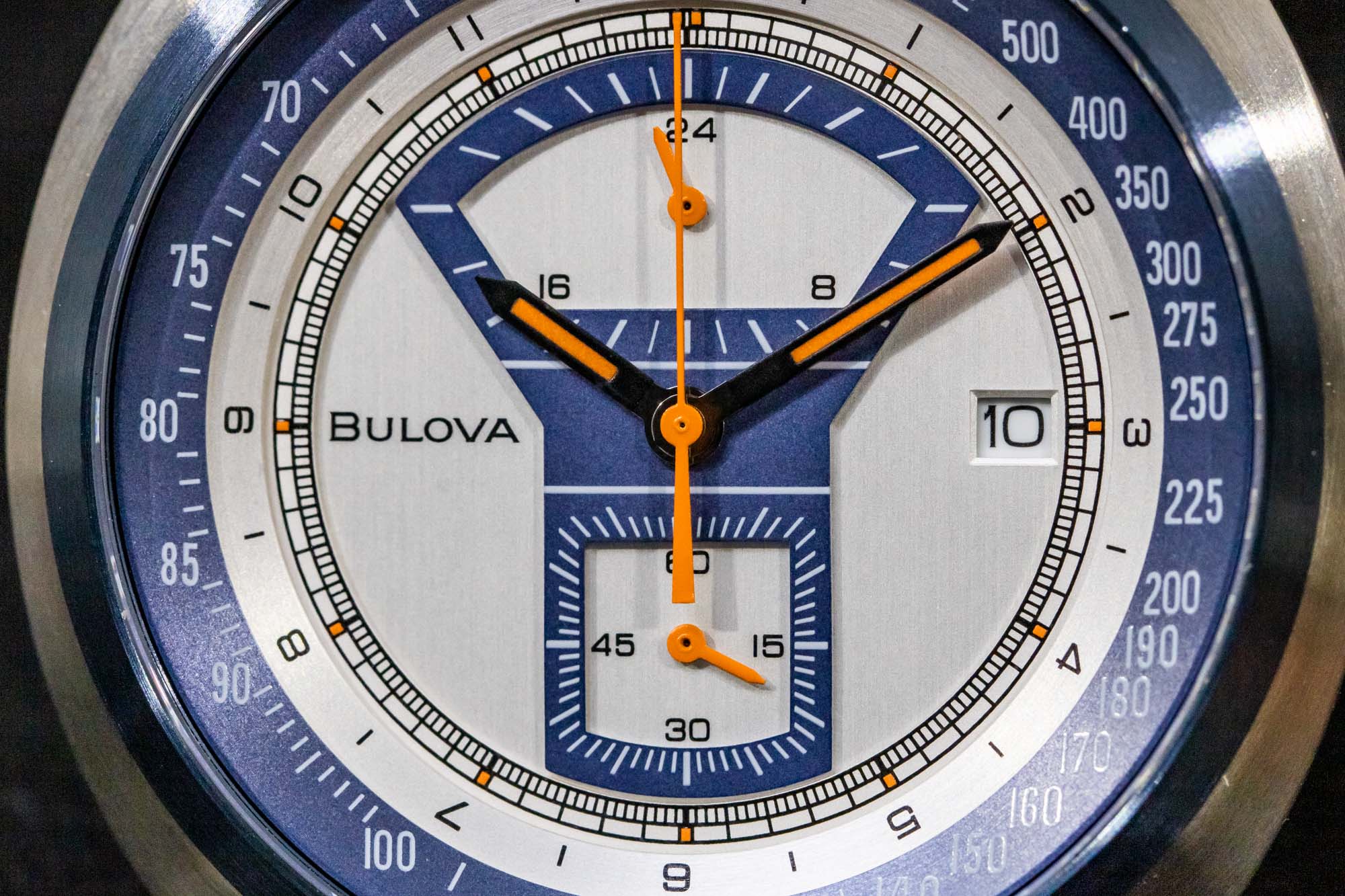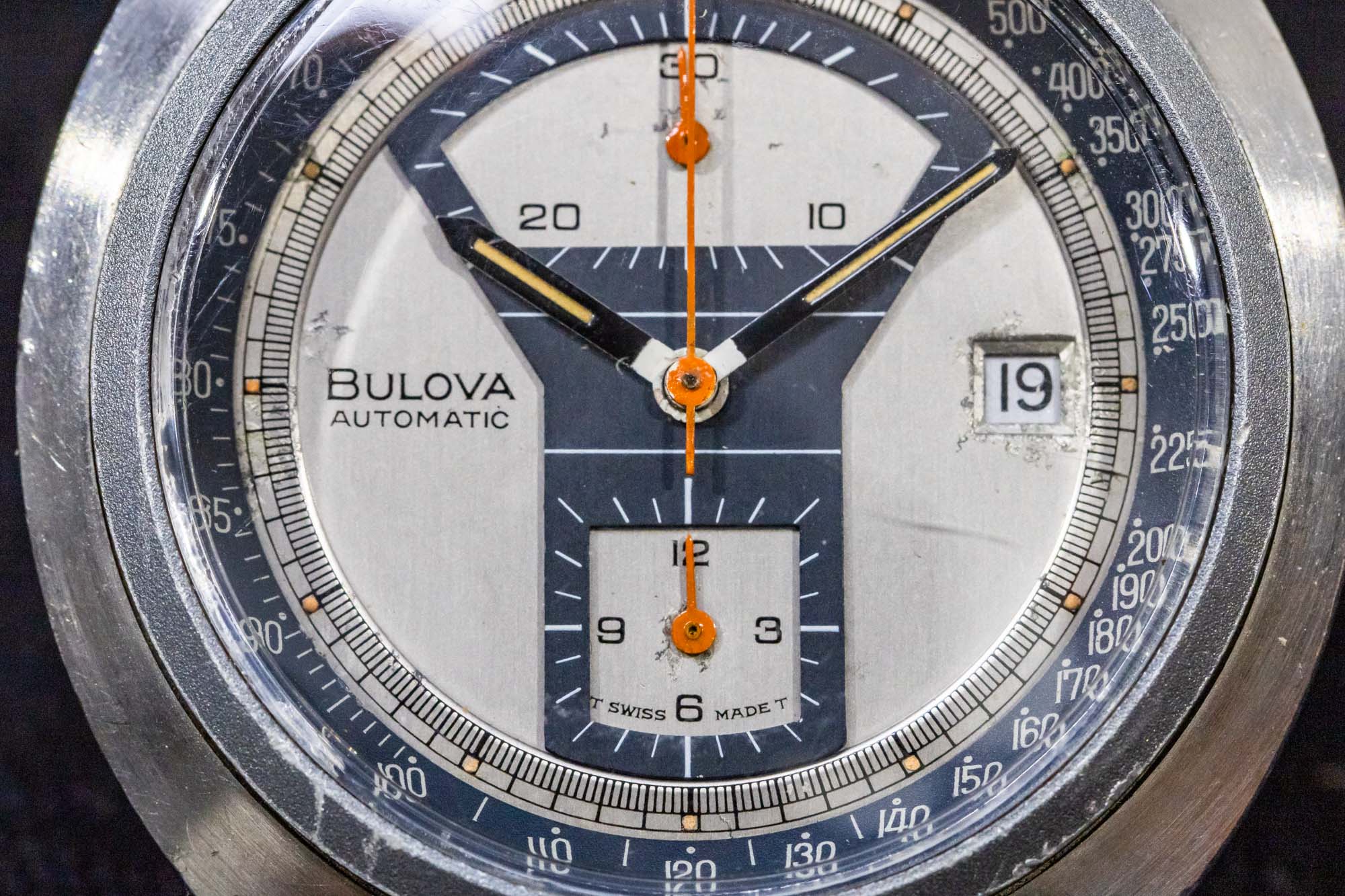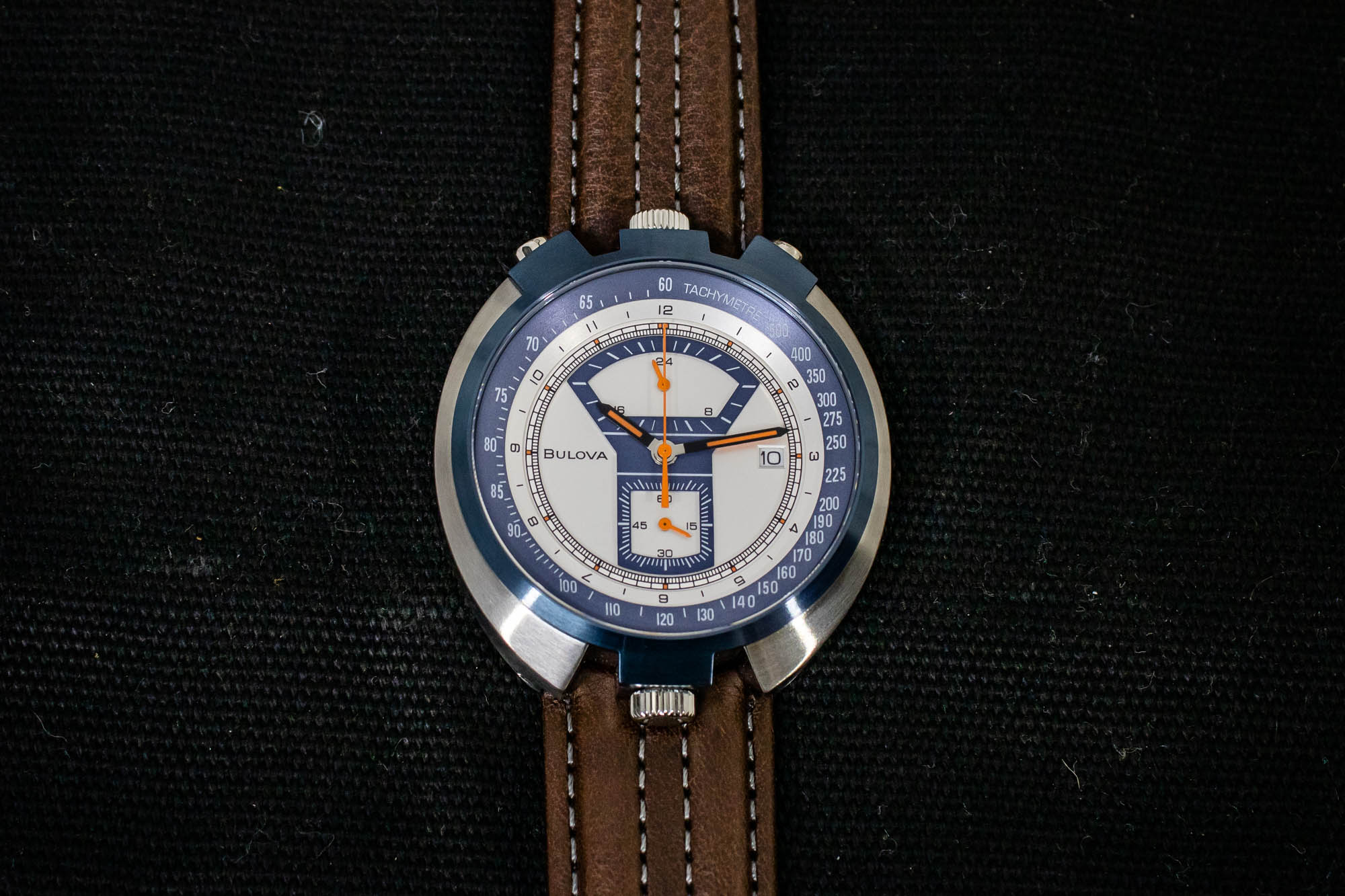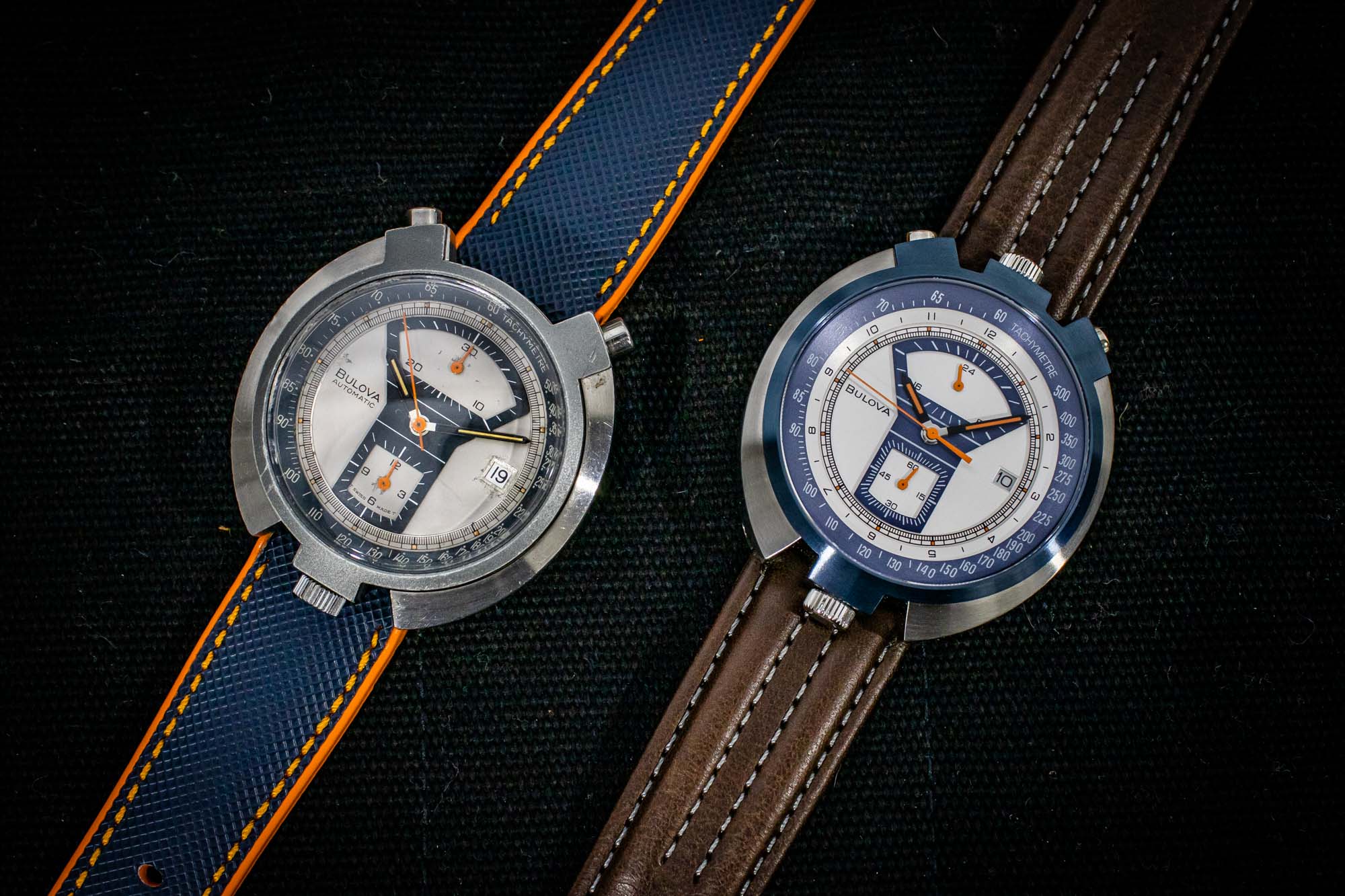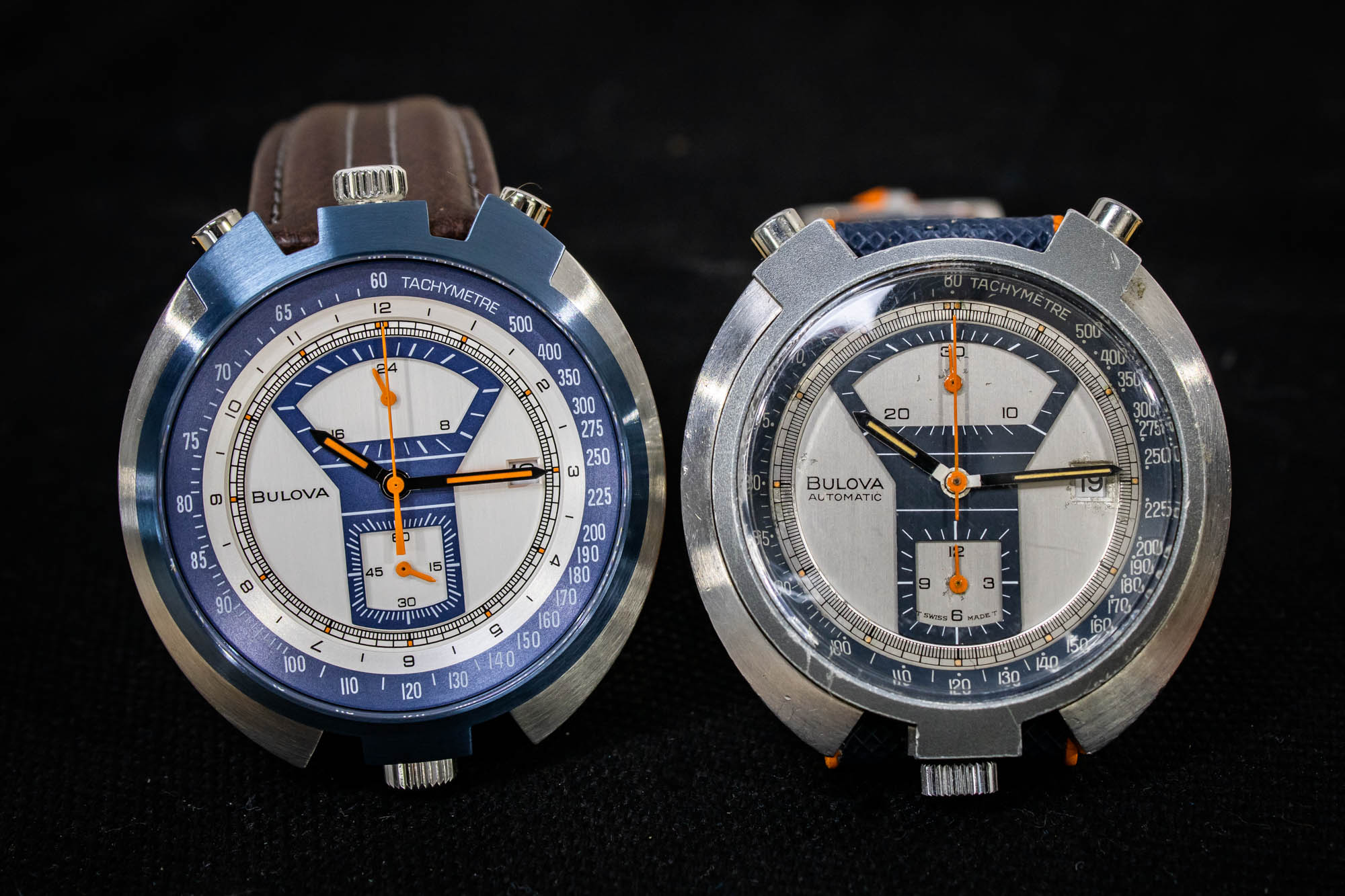
Earlier this year in 2022, Bulova released the Archive Re-Edition Parking Meter Chronograph, and many die-hard fans of the brand rejoiced, as it represented a chance to own a modern rendition of what is often considered to be one of the “Holy Grails” of vintage Bulova collecting, but at a mere fraction of the price of its true 1973 counterpart. At the same time, there were other collectors and enthusiasts who felt that the new watch was too significant of a departure from the original 1970s model and that it ultimately lacked the same funky magic that made the vintage examples so special. That said, when I first wrote about the new Bulova Parking Meter Chronograph upon its initial launch back in August, I couldn’t really comment on how likely it was to satisfy the urge to own an original example, simply because I had never actually seen a vintage one in the metal before. Given that Bulova was kind enough to provide a sample of the modern Archive Re-Edition Parking Meter Chronograph (ref. 98B390), I figured I’d try to track down one of the vintage examples for a proper head-to-head comparison.
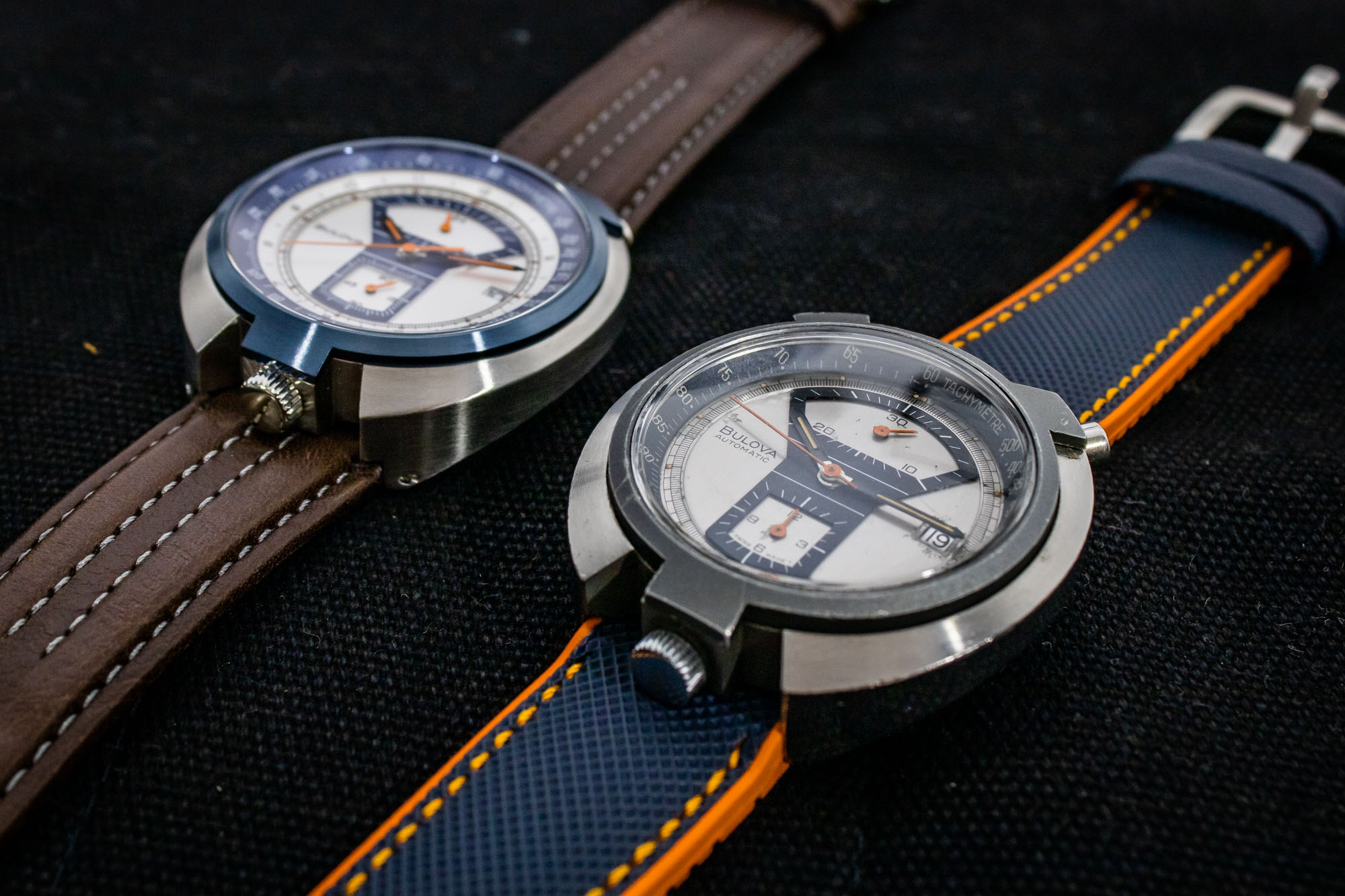
While I was aware that the original “Parking Meter” was quite rare and ranked among the most expensive vintage Bulova watches available, I didn’t fully realize how difficult it would be to find someone who actually owned one of these bullhead-style chronographs. Originally launched in 1973, the Bulova ref. 31008-6W earned its now-famous “Parking Meter” nickname due to the distinct shape of the registers on its dial, which resemble the silhouette of a classic New York City parking meter. The original Bulova Parking Meter watch was a flash in the pan from a production standpoint, and surviving examples are now few and far between. Aside from the fact that the model has been out of production for nearly half a century, many serious Bulova collectors don’t even own a vintage Parking Meter, and it’s one of those watches that you may see listed for sale by a few dealers, but it’s never actually one that you encounter out in the wild. After asking a few Bulova enthusiasts, I was ultimately pointed in the direction of a friend of mine named Ramin, and although he technically has a vintage Bulova Parking Meter, it’s not actually his personal watch. Ramin is one of the guys behind the vintage dealer Experts Watches, and the example that he has is actually part of his company’s inventory. Therefore, while I was able to find a vintage version to photograph for this article, I still don’t actually know a single person who owns this particular watch as part of their personal collection.
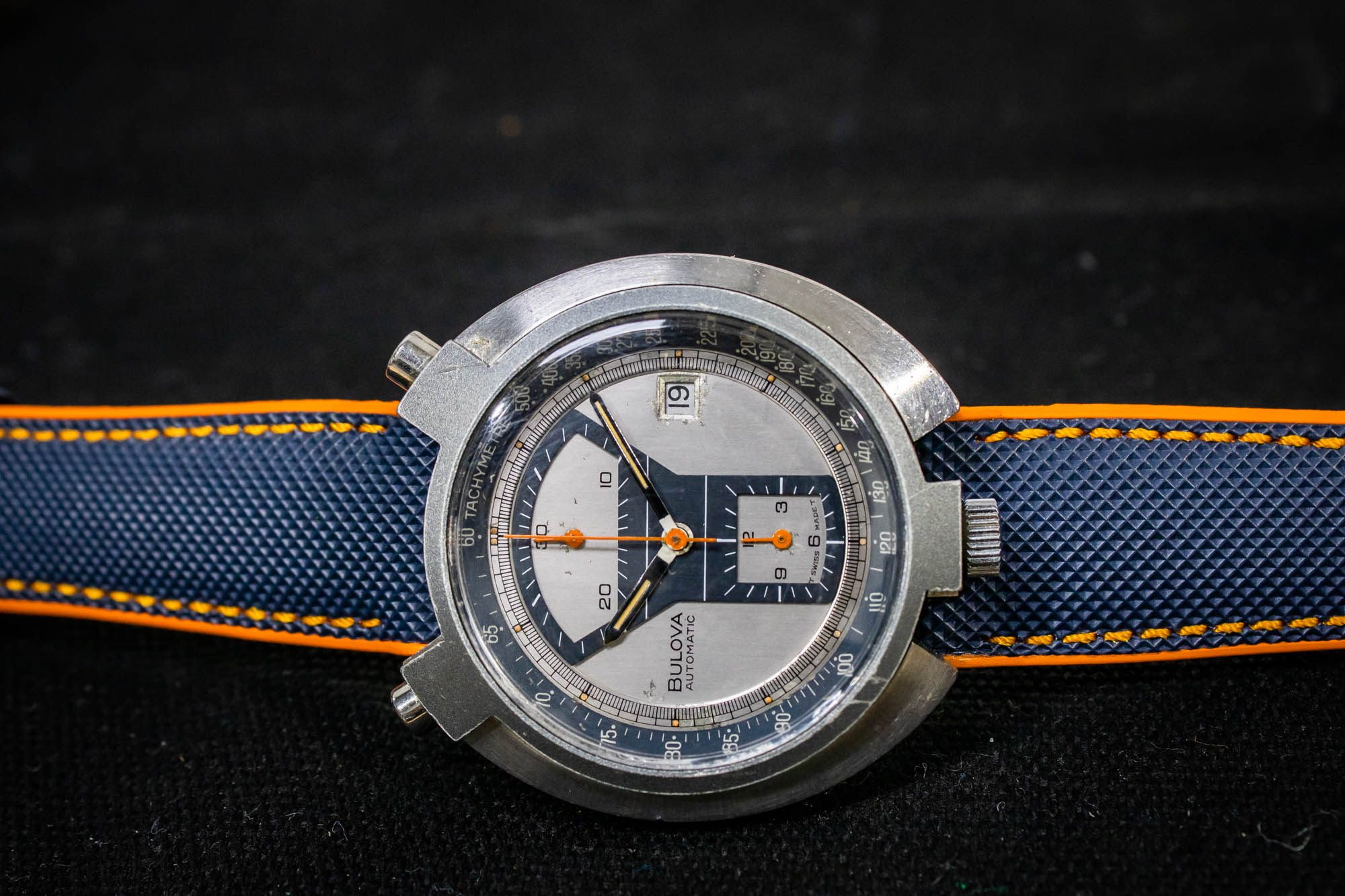
From a look and feel standpoint, the case of the new Bulova Archive Re-Edition Parking Meter Chronograph is arguably the single greatest departure from its vintage counterpart. While it still measures 43mm in diameter, having a second crown located between the two pushers at 12 o’clock ultimately makes the case feel noticeably more oblong in the vertical direction, and this is further accentuated by the fact that the actual push-pieces themselves are slightly shorter on the modern version, which condenses the overall visual profile towards the center of the watch versus being allocated more towards the two sides of the case. On top of that, the actual outer edges of the stainless steel case don’t extend past the rim of the blue bezel quite as much on the modern version, and when you consider that the addition of the secondary crown brings the total length of the re-edition up to 50.5mm (when measuring from one tip of the crown to the other), it’s easy to understand how the cumulative result of these various updates and details is a watch that ultimately feels quite a bit more oblong than its original 1973 counterpart.

Additionally, the side case profile is also radically different on the new model and it offers a noticeably flatter overall wearing experience. While the vintage Bulova Parking Meter is fitted with a domed mineral crystal, the modern re-edition receives a flat sapphire crystal, and this significantly changes the overall face of the watch and gives it a much more contemporary feel compared to the slightly bubble-like appearance of the original. On top of that, while the caseback on the vintage version protrudes to reach the bottom edge of the lugs, it nearly sits flat with the center of the middle case on the re-edition, and this gives the watch itself a thinner and almost curved profile that measures 11.8mm-thick at the center of the caseback, compared to coming it at 14mm like the original model. Due to this difference in caseback profile, the bevels on the underside edges of the case are quite a bit less pronounced on the modern re-edition, although the trade-off is that the updated case shape will be able to hug the top surface of your wrist, rather than essentially sitting on top of it. Beyond that, you now get drilled lugs on the new model, and rather than being set 20mm apart like on the vintage version, the modern Parking Meter now has wider 22mm lugs, which only further detracts from the wide and bulbous profile that defined the original from 1973.

Similarly, although the dials offer very much of the same overall appearance, numerous updates and small changes can be spotted between the modern and vintage examples of the Bulova Parking Meter Chronograph. The additional 12-hour internal rotating bezel on the re-edition (which is now controlled by the crown located at 6 o’clock) makes the dial feel smaller on the new model, due to the fact that it sits outside of the minute track. On the vintage version, it’s the tachymeter scale that almost feels like it doesn’t have enough space, while it’s ultimately the minute track that ends up feeling crowded on the modern edition. Since the modern Bulova Parking Meter isn’t powered by a self-winding movement, the word “automatic” gets dropped from the dial on the re-edition, and unlike the vintage version that has tritium-filled hands with white centers, the hour and minute hand are given polished center sections on the re-edition, and they get filled with bright orange colored luminescent material that matches the vivid color of the rest of the painted hands.
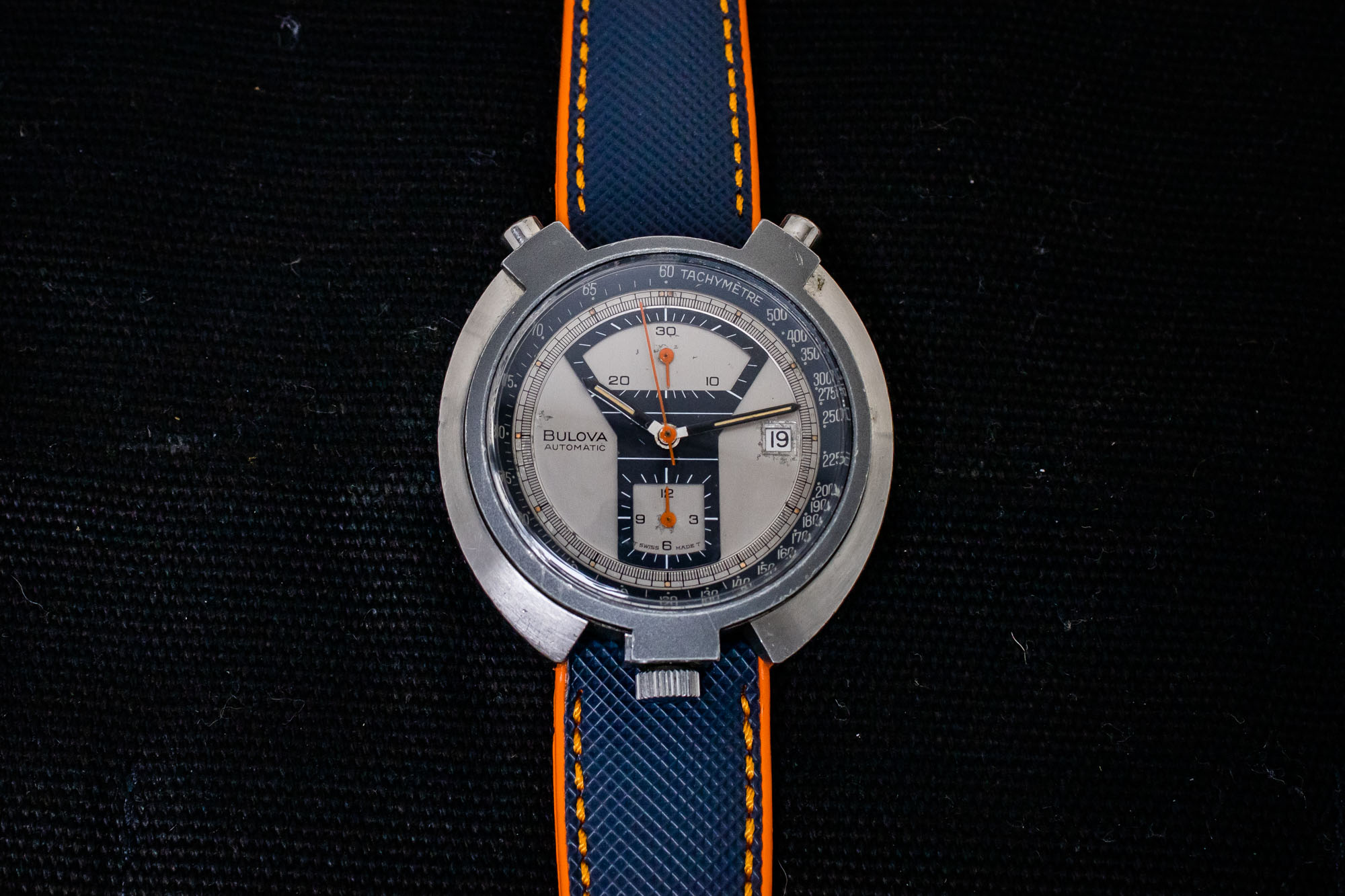
Beyond that, while the modern Bulova Archive Re-Edition Parking Meter Chronograph has all of the same core dial elements as its vintage predecessor, the two registers now have completely different purposes. While neither version offers a running seconds hand for the time, the vintage model features a 30-minute counter at the top with a 12-hour totalizer on the lower half of the dial. On the new version, the bottom register is a 60-minute counter for the chronograph, while the top sub-dial simply displays the same time as the centrally-mounted hands, but presented in a 24-hour format. While you still get a date window at 3 o’clock, and can technically track elapsed hours by using the chronograph in conjunction with the re-edition’s rotating 12-hour bezel, I have a feeling that most collectors would have preferred a proper 12-hour chronograph versus essentially having an additional AM/PM indicator. Similarly, while I’m typically a big fan of 12-hour bezels, I would have personally rather seen the original design featured here instead, as the additional outer scale slightly throws off the overall proportions of the dial and makes it feel small in comparison to the two separate scales that surround its perimeter.
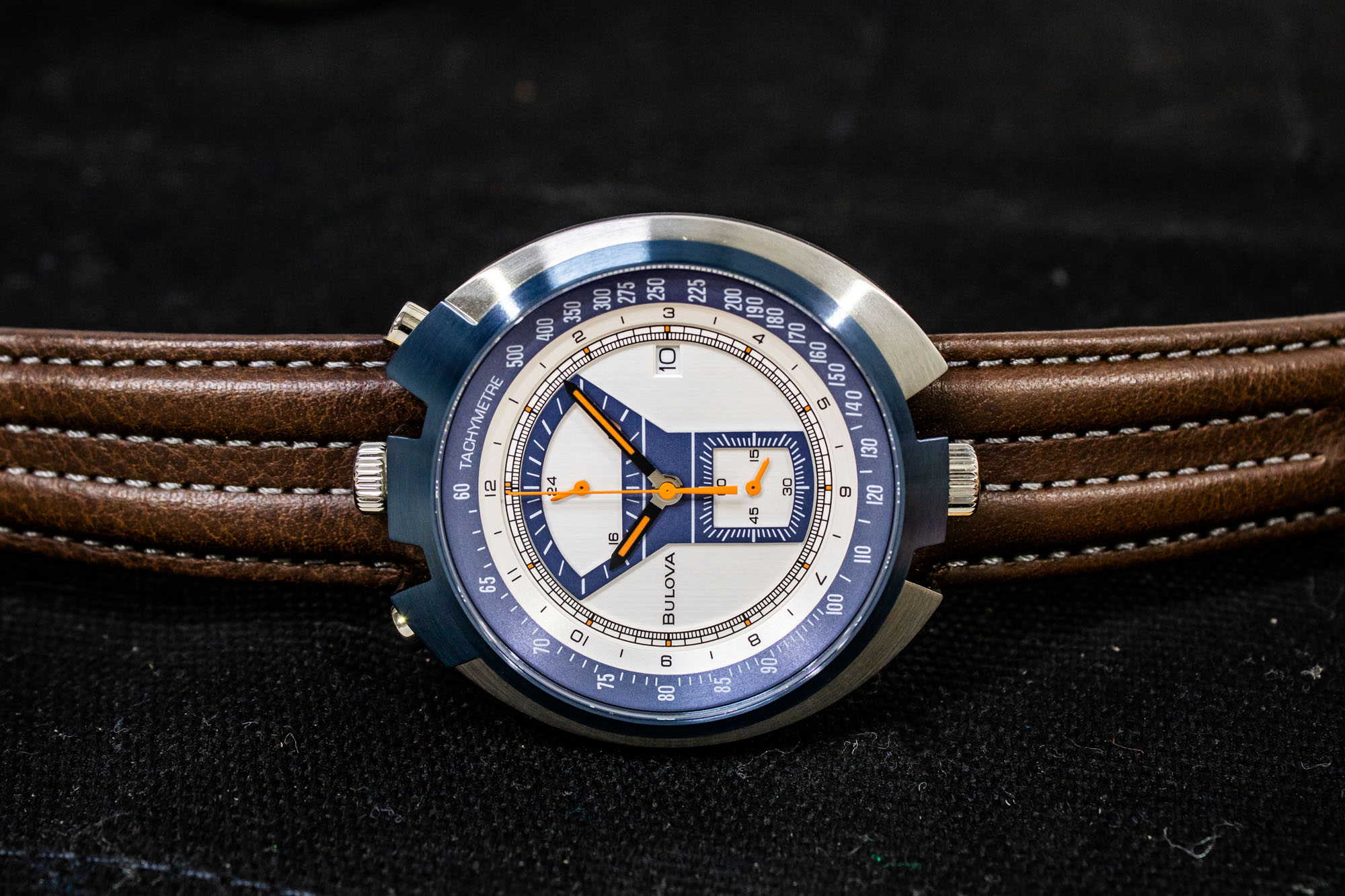
Aside from its updated case proportions, the movement powering the new Bulova Archive Re-Edition Parking Meter Chronograph is arguably the other most significant departure from the original 1970s version. While the vintage model contained one of the very first automatic chronograph movements, the new Bulova Parking Meter gets fitted with a simple battery-powered quartz chronograph caliber. Officially known as the Miyota OS21, the movement does offer far superior timekeeping and guarantees accuracy to within 15 seconds per month, although it is entirely inauspicious from a horological standpoint. The use of a quartz caliber is what allows the modern reinterpretation to have a significantly thinner case than its vintage counterpart, and it is also what allows the new Parking Meter Chronograph to be priced firmly on the affordable end of the spectrum, as the same watch would likely cost a minimum of three to four times as much had Bulova opted for a mechanical chronograph movement here instead. From a purely practical standpoint, a quartz caliber makes a lot of sense, although since this really is an enthusiast-driven piece, it would have been nice to see some type of mechanical option, or even something solar-powered, which might have been a decent compromise, as this would give owners the autonomy of not needing to worry about routine battery replacements, while still providing most of the same inherent benefits of a traditional quartz movement.
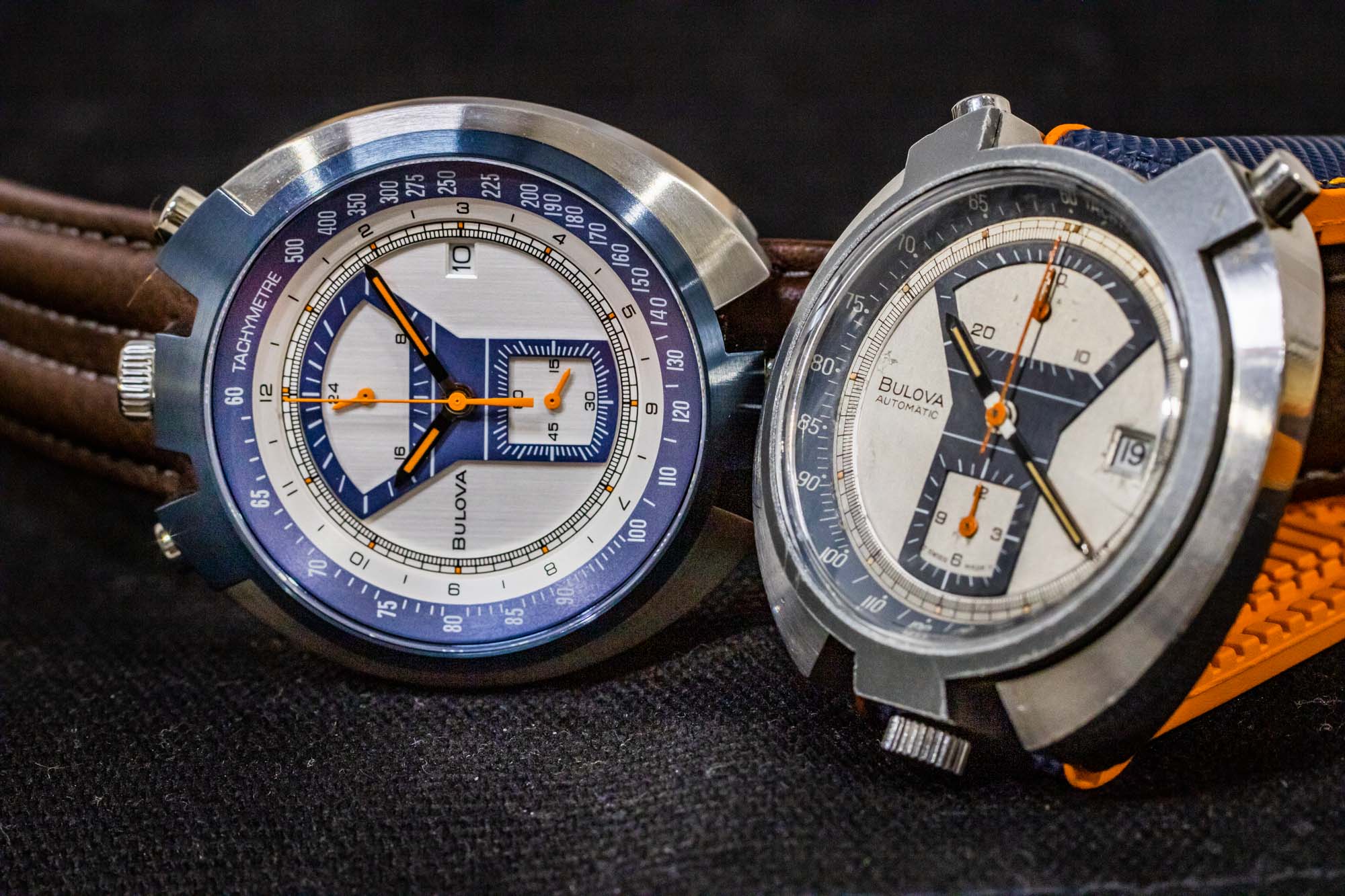
Bulova describes its Archive series as, “the reimagination of our most nostalgic models, infused with modern elements” — and this helps explain why the modern Parking Meter Chronograph isn’t a direct carbon copy of the vintage 1970s version that serves as its inspiration. While certain deviations such as having a secondary crown or a 24-hour display on the dial were likely the results of production constraints relating to the configurations of available movements, others such as the case shape or the decision to increase the lug width to 22mm were likely intentional choices that were made to update the model and give it a more modern twist. Additionally, it’s also important to remember that despite the fact that the modern Bulova Archive Re-Edition Parking Meter Chronograph is produced as a limited edition of 5,000 examples, it also has an official retail price of $595 USD, and it was always intended to be an accessible offering for enthusiasts, rather than a premium halo piece at the top-end of the brand’s catalog. A true vintage example will typically cost anywhere between $5,000 and $6,000 USD, and at about 1/10th of the price, the modern iteration makes a lot of sense as either an affordable alternative or as a care-free companion piece for the Bulova collector who owns a vintage Parking Meter Chronograph and wants to be able to have a similar version of the watch that they can wear in situations that might risk damaging a rather rare and valuable piece.
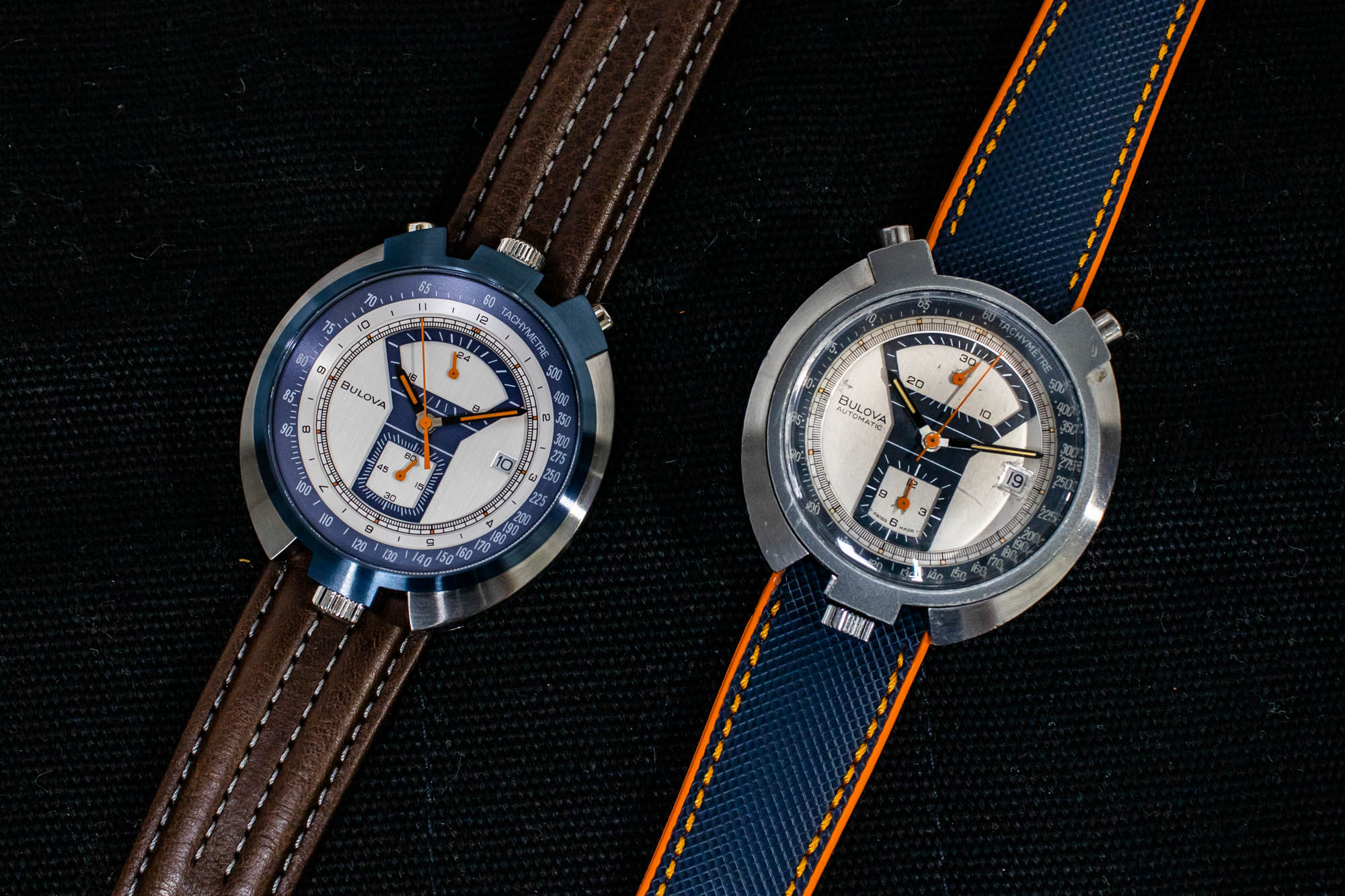
At the end of the day, is the new Bulova Archive Re-Edition Parking Meter Chronograph a 1:1 alternative to the fan-favorite 1973 vintage model? Absolutely not — although it never was supposed to be a direct recreation of the watch in the first place, and while nearly $600 for a quartz chronograph does feel a bit expensive, the Parking Meter is undeniably a lot of fun to wear. Additionally, for those who simply want to indulge in this funky 1970s style, $600 is a lot less expensive than $6,000, and since the re-edition also benefits from the durability and grab-and-go convenience of a quartz movement, I could easily see someone picking up the modern example as a fun and colorful weekend watch. For more information on the Bulova Parking Meter Chronograph, please visit the brand’s website.

